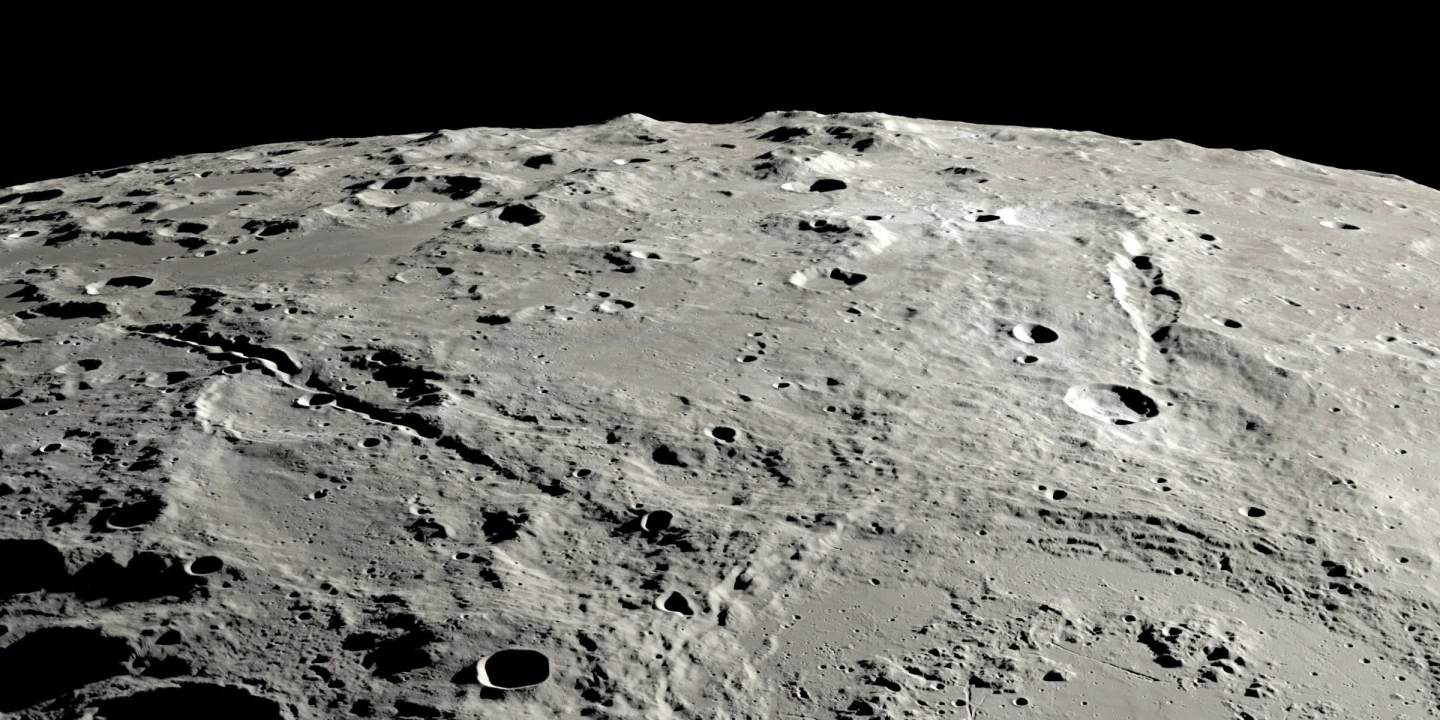New research reveals the dramatic aftermath of an ancient asteroid impact on the far side of the moon: the formation of two colossal canyons akin to the Grand Canyon, The Associated Press reports.
The findings, published in Nature Communications, bring both a deeper understanding of the moon’s violent past and welcome news for NASA’s upcoming Artemis missions.
A team of US and British scientists analyzed data and images from NASA’s Lunar Reconnaissance Orbiter to map the impact site and trace the trajectory of the debris. Their analysis showed that some 3.8 billion years ago, a massive asteroid – estimated to be 15 miles across – slammed into the lunar surface.
The space rock grazed the lunar south pole before impact, triggering the formation of a vast basin. Streams of boulders then hurtled across the surface at speeds of nearly 1 mile per second, carving out the canyons in a mere ten minutes. The process, as described by lead author David Kring of the Lunar and Planetary Institute in Houston, was “a very violent, a very dramatic geologic process” releasing energy 130 times greater than the world’s current nuclear arsenal.
Crucially, the research indicates that most of the ejected debris was flung away from the lunar south pole, NASA’s intended landing site for the Artemis program. This means the targeted exploration zone on the moon’s near side remains relatively unscathed by the impact.
This is particularly significant because the undisturbed terrain at the south pole contains rocks dating back over 4 billion years, offering a unique window into the moon’s and Earth’s early history. By analyzing these ancient rocks, scientists hope to unravel mysteries surrounding the origins of both celestial bodies.
While the south pole remains largely untouched by the debris, Kring noted that the team will need to further investigate whether the newly identified canyons are permanently shadowed, similar to some polar craters. These shadowed areas are believed to harbor significant deposits of water ice, a valuable resource for future lunar bases.
NASA’s Artemis program, the successor to the Apollo missions, aims to return astronauts to the moon later this decade. The current plan is to first send astronauts on a lunar orbit in 2025, followed by a crewed landing near the south pole shortly after – the first lunar touchdown since the Apollo era.










The latest news in your social feeds
Subscribe to our social media platforms to stay tuned